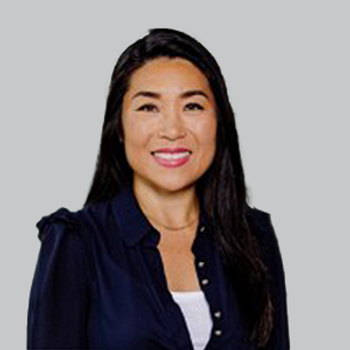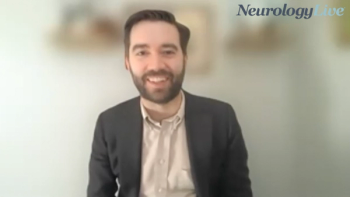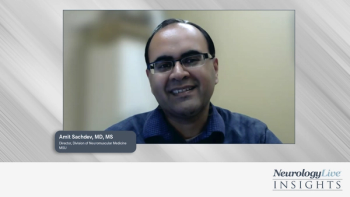
Fetal Exposure to Antiseizure Medications During Third Trimester May Increase Risk for Worse Functioning in Children
Significant associations between higher third-trimester ASM concentrations with poorer adaptive and behavior outcomes were seen on several assessments, including the Adaptive Behavior Assessment System, Third Edition.
Data from the Maternal Outcomes and Neurodevelopmental Effects of Antiepileptic Drugs (MODEAD) study showed no difference in the adaptive functioning of children of women with epilepsy on antiseizure medications (ASMs); however, the trial did reveal an exposure-dependent association of ASMs with functioning during the third trimester. Investigators concluded that psychiatric or psychological screening and the referral of women with epilepsy and their offspring should be recommended when appropriate.1
MONEAD is a National Institutes of Health-funded, prospective, observational cohort that enrolls pregnant women with and without epilepsy in the US across 20 specialty epilepsy centers. Published in JAMA Neurology, the analysis featured 302 children of women with epilepsy and 84 children of women without epilepsy to assess the association of fetal ASM exposure with subsequent adaptive, behavioral or emotional, and neurodevelopmental disorder outcomes in children 2, 3, and 4.5 years of age.
Senior investigator Page B. Pennell, MD, FAES, the Henry B. Higman Professor of Neurology at the University of Pittsburgh School of Medicine, and colleagues used change in adaptive functioning at 4.5 years as the primary end point, explained through the Adaptive Behavior Assessment System, Third Edition (ABAS-3) General Adaptive Composite (GAC) score. Emotional or behavioral functioning was measured by the Behavior Assessment System for Children, Second Edition (BASC-2), and the level of stress in the parent-child relationship was evaluated with the Parenting Stress Index, Fourth Edition (PSI-4), completed by the mother or father of the child at 2, 3, and 4.5 years of age.
Of the cohort, most mothers with epilepsy (74.8%) were on a monotherapy ASM regimen for their third trimester, with some receiving polytherapy (20.5%) and others receiving no ASMs (4.3%) throughout pregnancy. One patient failed to experience third trimester ASMs because of delivery that occurred in the second trimester.
In the first primary analysis, results showed no difference in GAC scores at 4.5 years of age for children of women with epilepsy (unadjusted least-square mean [LSM], 101.4 [95% CI, 99.9-102.9] vs 101.1 [95% CI, 98.4-103.8] adjusted LSM, 101.4 [95% CI, 100.0-102.8] vs 101.0 [95% CI, 98.4-103.6]; and parameter estimate [PE], 0.4 [95% CI, −2.5 to 3.4]; P = .77). In the fully adjusted model, mother’s higher postbirth perceived stress, lower educational level, major depressive episode during pregnancy, older age, and child’s male sex were all considered variables associated with lower GAC scores in children at 4.5 years.
In both an adjusted an unadjusted analysis, higher third-trimester ratio ASM concentrations were linked with lower GAC scores at 4.5 years of age (adjusted: PE, −7.8 [95% CI, −12.6 to −3.1]; P = .001; unadjusted: PE, −7.4 [95% CI, −11.6 to −3.3]; P < .001). Factors such as higher mother postbirth anxiety level, lower educational level, older age, ASM monotherapy, problematic family functioning at child’s 2-year-old visit, and small birth for gestational age were all considered significant variables in the fully adjusted model.
In the study, lamotrigine (43.8%) and levetiracetam (34.5%) were the most commonly used monotherapies. Among those who completed the study, adjusted analyses showed a negative association between third-trimester ratio ASM concentrations and GAC scores at 4.5 years of age in those on levetiracetam monotherapy (PE, −18.9 [95% CI, −26.8 to −10.9]; P < .001) and lamotrigine monotherapy (PE, −12.0 [95% CI, −23.7 to −0.3]; P = .04) when stratified by ASM category and separately for all monotherapy (PE, −10.7 [95% CI, −16.6 to −4.8]; P < .001) when stratified by ASM group. The study found no such association when observing breastfeeding, folate use and dose, and sleep quality.
Between women with and without epilepsy, there were no differences in additional measures of child behavior. Notably, higher third-trimester ratio ASM concentrations were significantly associated with poorer adaptive and behavior outcomes on ABAS-3 Social and Practical composite scores at 4.5 years, BASC-2 aggression and social skill scores at 4.5 years of age, and BASC-2 hyperactivity scores at 2 years of age. Higher third-trimester ratio ASM concentrations for levetiracetam were associated with all 4 ABAS-3 Composite scores at 4.5 years of age and BASC-2 hyperactivity, aggression, atypicality, attention problems, and social skills scores at 4.5 years of age.
REFERENCE
1. Cohen MJ, Meador KJ, Loring DW, et al. Behavioral outcomes and neurodevelopmental disorders among children of women with epilepsy. JAMA Neurol. Published online November 20, 2023. doi:10.1001/jamaneurol.2023.4315
Newsletter
Keep your finger on the pulse of neurology—subscribe to NeurologyLive for expert interviews, new data, and breakthrough treatment updates.



































